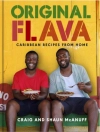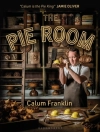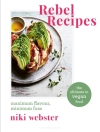Najmieh Batmanglij was exiled from Iran 40 years ago. She was living in France where she did not speak the language or have proper documents—and above all, she was pregnant. Out of a nostalgia and yearning to connect with her roots, she wrote her first cookbook,
Food of Life
, as a kind of love letter to her children. She wanted to share with them all the good things she had experienced growing up in a traditional family in Iran.
Over the years,
Food of Life
has been called “the definitive book on Persian cooking” by the Los Angeles Times and “the Persian cookbook Bible” by Iranians and others. Food of Life was followed by six more cookbooks including Silk Road Cooking, which according to the New York Times, read like “a good novel—once you start it’s hard to put down.” But as she worked on these books at home in America, a fantastical dream took hold—a craving to revisit Iran and celebrate the specialties and traditional dishes of each region.
The challenges that faced her—emotional, political, and logistical—were daunting, but she felt she had to do it. She knew from her Silk Road research trip to China twenty years earlier that, under the bulldozer of modernity, Iran too would soon lose many of its traditional ways, special cooking techniques, and small artisanal workshops. Najmieh was determined to capture and preserve them before that happened.
After five years of overcoming obstacles, meticulous planning, and ten thousand miles of traveling the length and breadth of Iran—cooking with local cooks, visiting workshops, and developing recipes—Najmieh’s dream has been realized with the creation of
Cooking in Iran: Regional Recipes and Kitchen Secrets
. This book is a distillation of those past five years. It is an authoritative exploration of a cuisine whose cultural roots are among the deepest of any in the world.
Najmieh takes us with her on an extraordinary culinary journey: from the daily fish market in Bushehr, on the Persian Gulf, where she and her host buy and cook a 14-pound grouper in a tamarind, cilantro, and garlic sauce, to the heart of historical Isfahan, in central Iran, where she prepares lamb necks in a yogurt, saffron, and candied orange peel sauce topped with caramelized barberries. Traveling north to the Caspian Sea, she introduces us to the authentic Gilaki version of slow-cooked duck in a pomegranate and walnut sauce, served over smoked rice; and the unique flavors of a duck-egg omelet with smoked eggplant and baby garlic. Lingering in the north, in tribal Kurdistan, she treats us to lamb-and-bulgur meatballs filled with caramelized onions and raisins in a saffron sauce. Dropping south, to Bandar Abbas on the coast, she teases our palate with rice cooked in date juice and served with spicy fish, while in Baluchistan she cooks spiced goat in a pit overnight and celebrates the age-old method of making bread in hot ashes.
At every village and off-the-beaten-track community, Najmieh unearths traditional recipes and makes surprising new discoveries, giving us a glimpse along the way of the places where many of the ingredients for the recipes are grown. She treks through the fields and orchards of Iran, showing us saffron being picked in Khorasan and pomegranates in Yazd, dates harvested by the Persian Gulf, pistachios in Kerman, and tea and rice by the Caspian.
With more than 250 recipes and 450 photographs, this updated edition of
Cooking in Iran
is packed with inspiring ideas and practical tips—everything you’ll need for recreating these glorious dishes so that you can embark on a culinary journey of your own.
İçerik tablosu
A Geography of Iran 11
Preface 13
Tehran 14
Arrival 17
Climate 18
A Little History 21
The Tajrish Bazaar 25
Downtown Tehran 33
Iranian Soups and the Kitchen 37
Ladies’ Lunch 40
Tehran in the 1900s 42
Darband 50
Darakeh 56
THE CASPIAN 68
A Little History 71
A Caspian Story 73
Cooking in Rasht 80
Masouleh 103
Harvesting Tea 166
AZARBAIJAN 172
A Little History 175
Ardabil 177
Tabriz 178
Cooking in Tabriz 183
The Story of Omaj 193
The National Dish:
Chelow Kabab 208
The Story of Minced Kabab 215
Wine in an Ancient Kitchen 227
QOM 228
A Little History 229
QAZVIN 232
A Little History 233
Dessert 241
HAMADAN 244
A Little History 245
Iranian Jews 253
ARAK 268
A Little History 269
BREAD 284
A Flat Bread Story 287
KURDISTAN AND THE TRIBAL REGION 312
A Little History 313
ISFAHAN 352
A Little History 354
Iranian Armenians 379
KASHAN 382
A Little History 383
Do Not Despair 385
KHORASAN 388
A Little History 391
Saffron 393
Barberries 417
YAZD 428
A Little History 431
The Cypress at Abarkuh 435
Iranian Zoroastrians 437
Pomegranates 443
A Pastry Workshop 452
KERMAN 461
A Little History 463
The Pistachio Journey 465
The Persian Garden 509
FARS / SHIRAZ 516
A Little History 518
Hafez 520
Sesame 555
Fill the Glass with Wine 559
KHUZESTAN 563
A Little History 565
THE PERSIAN GULF 574
A Little History 577
Bushehr 579
The Bounty of the Sea 581
The Date Palm 585
A Conversation Between a Date Palm and a Goat 593
SISTAN AND BALUCHISTAN 680
A Little History 682
A Visual Glossary of an Iranian Pantry 702
Acknowledgements 704
Credits 706
RECIPE CONTENTS 708
Index 714
Yazar hakkında
Najmieh has spent the past 40 years cooking, traveling, and adapting authentic Persian recipes to tastes and techniques in the West. She has been hailed as “the guru of Persian cuisine” by The Washington Post. Her Food of Life was called “the definitive book on Iranian cooking” by the Los Angeles Times. Her Silk Road Cooking was selected as one of the 10 best vegetarian cookbooks of 2004 by The New York Times; and her book From Persia to Napa: Wine at the Persian Table won the Gourmand Cookbook Award for the best wine history book of 2007. Najmieh’s most recent book, Cooking in Iran: Regional Recipes and Kitchen Secrets, was selected as one of the best cookbooks of Fall 2018 by The New York Times. Najmieh is a member of Les Dames d’Escoffier and lives in Washington, DC, where she teaches Persian cooking, and consults with restaurants around the world.












